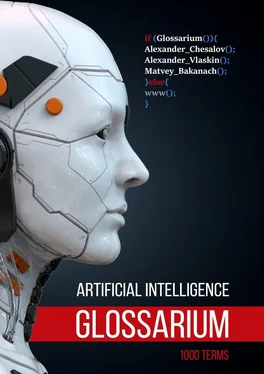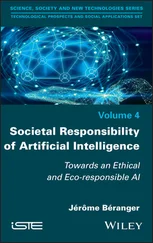Cloud robotics (Облачная робототехника) –A field of robotics that attempts to invoke cloud technologies such as cloud computing, cloud storage, and other Internet technologies centred on the benefits of converged infrastructure and shared services for robotics. When connected to the cloud, robots can benefit from the powerful computation, storage, and communication resources of modern data center in the cloud, which can process and share information from various robots or agent (other machines, smart objects, humans, etc.). Humans can also delegate tasks to robots remotely through networks. Cloud computing technologies enable robot systems to be endowed with powerful capability whilst reducing costs through cloud technologies. Thus, it is possible to build lightweight, low cost, smarter robots have intelligent “brain” in the cloud. The “brain” consists of data center, knowledge base, task planners, deep learning, information processing, environment models, communication support, etc. [ 102 102 Сloud robotics [Электронный ресурс] // digitrode.ru URL: http://digitrode.ru/articles/2683-chto-takoe-oblachnaya-robototehnika.html (дата обращения: 09.02.2022)
]
Cloud TPU (Облачный процессор) –A specialized hardware accelerator designed to speed up machine learning workloads on Google Cloud Platform [ 103 103 Cloud TPU [Электронный ресурс] github.com URL: https://github.com/tensorflow/tpu (дата обращения: 25.02.2022)
]
Cluster analysis (Кластерный анализ) –A type of unsupervised learning used for exploratory data analysis to find hidden patterns or groupings in the data; clusters are modeled with a similarity measure defined by metrics such as Euclidean or probability distance.
Clustering (Кластеризация)is a data mining technique for grouping unlabeled data based on their similarities or differences. For example, K-means clustering algorithms assign similar data points into groups, where the K value represents the size of the grouping and granularity. This technique is helpful for market segmentation, image compression, etc.
Co-adaptation (Коадаптация) –When neurons predict patterns in training data by relying almost exclusively on outputs of specific other neurons instead of relying on the network’s behavior as a whole. When the patterns that cause co-adaption are not present in validation data, then co-adaptation causes overfitting. Dropout regularization reduces co-adaptation because dropout ensures neurons cannot rely solely on specific other neurons.
Cobweb (Метод COBWEB) –An incremental system for hierarchical conceptual clustering. COBWEB was invented by Professor Douglas H. Fisher, currently at Vanderbilt University. COBWEB incrementally organizes observations into a classification tree. Each node in a classification tree represents a class (concept) and is labeled by a probabilistic concept that summarizes the attribute-value distributions of objects classified under the node. This classification tree can be used to predict missing attributes or the class of a new object.
Code (Код)is a one-to-one mapping of a finite ordered set of symbols belonging to some finite alphabet.
Codec (Кодек) “A codec is the means by which sound and video files are compressed for storage and transmission purposes. There are various forms of compression: ‘lossy’ and ‘lossless’, but most codecs perform lossless compression because of the much larger data reduction ratios that occur [with lossy compression]. Most codecs are software, although in some areas codecs are hardware components of image and sound systems. Codecs are necessary for playback, since they uncompress [or decompress] the moving image and sound files and allow them to be rendered.” [ 104 104 Codec [Электронный ресурс] www.umich.edu URL: https://www.icpsr.umich.edu/web/ICPSR/cms/2042#C (дата обращения: 07.07.2022)
]
Cognitive architecture (Когнитивная архитектура) – The Institute of Creative Technologies defines cognitive architecture as: “hypothesis about the fixed structures that provide a mind, whether in natural or artificial systems, and how they work together – in conjunction with knowledge and skills embodied within the architecture – to yield intelligent behavior in a diversity of complex environments”
Cognitive computing (Когнитивные вычисления) —is used to refer to the systems that simulate the human brain to help with the decision- making. It uses self-learning algorithms that perform tasks such as natural language processing, image analysis, reasoning, and human – computer interaction. Examples of cognitive systems are IBM’s Watson and Google DeepMind [ 105 105 Cognitive computing [Электронный ресурс] // habr.com URL: https://habr.com/ru/company/ibm/blog/276855/ (дата обращения: 31.01.2022)
]
Cognitive Maps (Когнитивные карты)Cognitive maps are structured representations of decision depicted in graphical format (variations of cognitive maps are cause maps, influence diagrams, or belief nets). Basic cognitive maps include nodes connected by arcs, where the nodes represent constructs (or states) and the arcs represent relationships. Cognitive maps have been used to understand decision situations, to analyze complex cause-effect representations and to support communication. [ 106 106 Cognitive Maps [Электронный ресурс] www.igi-global.com URL: https://www.igi-global.com/dictionary/qplan/34624 (дата обращения: 07.07.2022)
]
Cognitive science (Когнитивистика, когнитивная наука) – The interdisciplinary scientific study of the mind and its processes. [ 107 107 Cognitive science Когнитивная наука и интеллектуальные технологии: Реф. сб. АН СССР. – М.: Ин-т науч. информ. по обществ. наукам, 1991. (дата обращения: 04.02.2022)
]
Cohort (Когорта) – A sample in study (conducted to evaluate a machine learning algorithm, for example) where it is followed prospectively or retrospectively and subsequent status evaluations with respect to a disease or outcome are conducted to determine which initial participants’ exposure characteristics (risk factors) are associated with it.
Cold-Start ( Холодный запуск) – A potential issue arising from the fact that a system cannot infer anything for users or items for which it has not gathered a sufficient amount of information yet.
Collaborative filtering (Коллаборативная фильтрация) –Making predictions about the interests of one user based on the interests of many other users. Collaborative filtering is often used in recommendation systems.
Combinatorial optimization (Комбинаторная оптимизация) – In Operations Research, applied mathematics and theoretical computer science, combinatorial optimization is a topic that consists of finding an optimal object from a finite set of objects [ 108 108 Combinatorial optimization [Электронный ресурс] // dic.academic.ru URL: https://dic.academic.ru/dic.nsf/ruwiki/107404 (дата обращения: 11.02.2022)
].
Читать дальше












